(Photo credit: Kaya Lindsay)
One of the many interesting cultural aspects of the Moab area, is the abundance of rock art, sometimes also known as petroglyphs. Petroglyphs are small figures carved into the black patinaed face of the sandstone walls out here, whereas pictographs are painted on the walls. These petroglyphs can be found on almost any hike in the Moab area, but below you will find a selection of our favorites for you to check out.
Moab is located on the stolen lands of the indigenous people ranging from Ute, Puebloans, the Dine Bikyah, the Hopi, Navajo, and Paiute. There was a rich culture here before Mormon settlers came through and established this town.
Remember, never touch rock art of any kind. The oils from your hands can damage the black patina and ruin the art. You should never scratch or carve anything into the stone next to any rock art, as it destroys the panels and is illegal.
Last year there was a very unfortunate vandalism issue at a beautiful and pristine panel known as the birthing panel. Please don’t touch or try to remove the vandalism, as it can make the harmful messages worse.
If you see anyone vandalizing a petroglyph in Moab please call the Archaeological Resources Protection Act hotline at 1-800-227-7286.
These ancient cultural resources are beautiful and haunting, leaving us with an uninterpretable puzzle. What did these first humans think while they were carving these pictures into the rock? What were their lives like? As you visit these rock art sites, try to imagine the lives lived by the Indigenous people who inhabited these lands thousands of years ago.
Moonflower Canyon
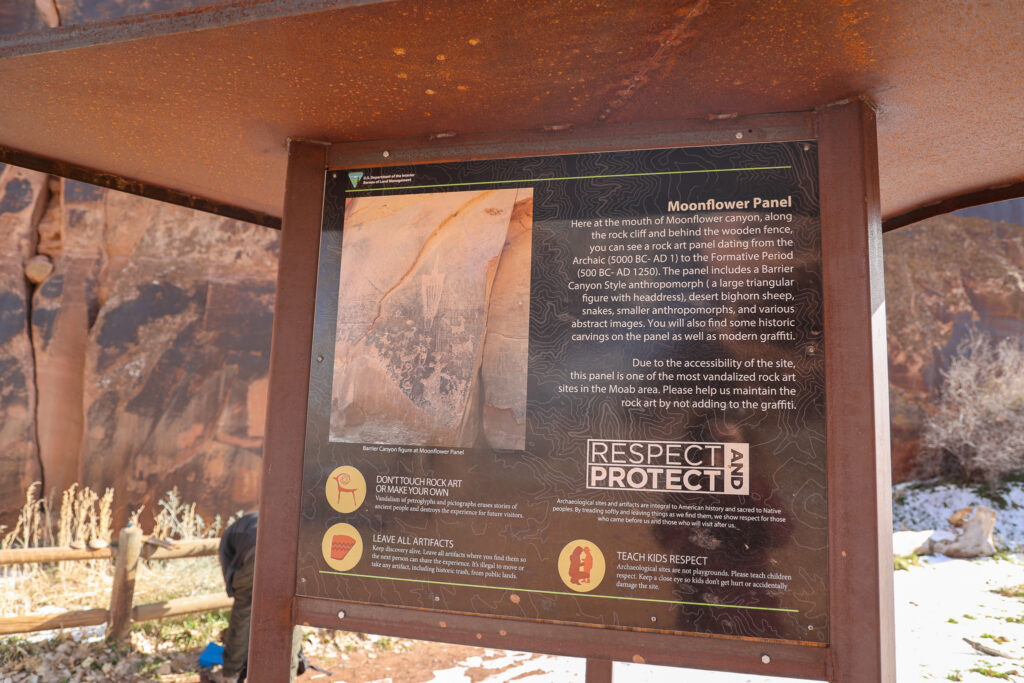
(Photo credit: Kaya Lindsay)
Location: 38.553913, -109.586265
Distance: 0 miles
Difficulty: Very easy
Bathroom on site: Yes
Dogs: Dogs allowed on leash
The Moonflower Canyon panel is a gorgeous petroglyph right on the side of Kane Creek Boulevard. Shown on the panel are hundreds of different abstract figures, but if you stare long enough you will recognize bighorn sheep, humans, snakes, and other animals.
Birthing Scene
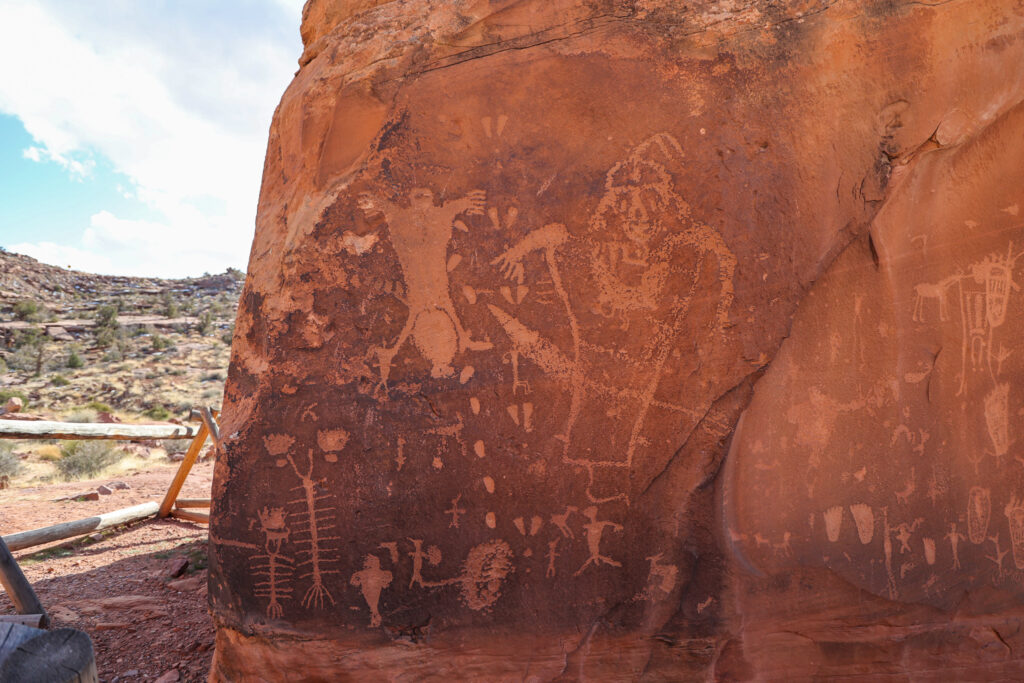
(Photo credit: Kaya Lindsay)
Location: 38.521949, -109.602800
Distance: 0 miles
Difficulty: Easy
Bathroom on site: No, but there is a bathroom very close by. Located at the Amasaback Trail Parking lot.
Dogs: Dogs on leash are allowed.
The famous Birthing Scene petroglyph was the site of some hateful vandalism last year. You can read more about that event here. If you visit the Birthing Scene, please do not attempt to remove the markings. Any contact with the rock will only add to the damage. The Bureau of Land Management is aware of the vandalism and is taking steps to remove it.
Featured on this rock is an obvious birthing scene, footprints, some human figures, and other abstract shapes. There is a fence around the rock, so please do not go over the fence or near the petroglyphs. Just enjoy them from a comfortable distance.
Golf Course Rock Art Site
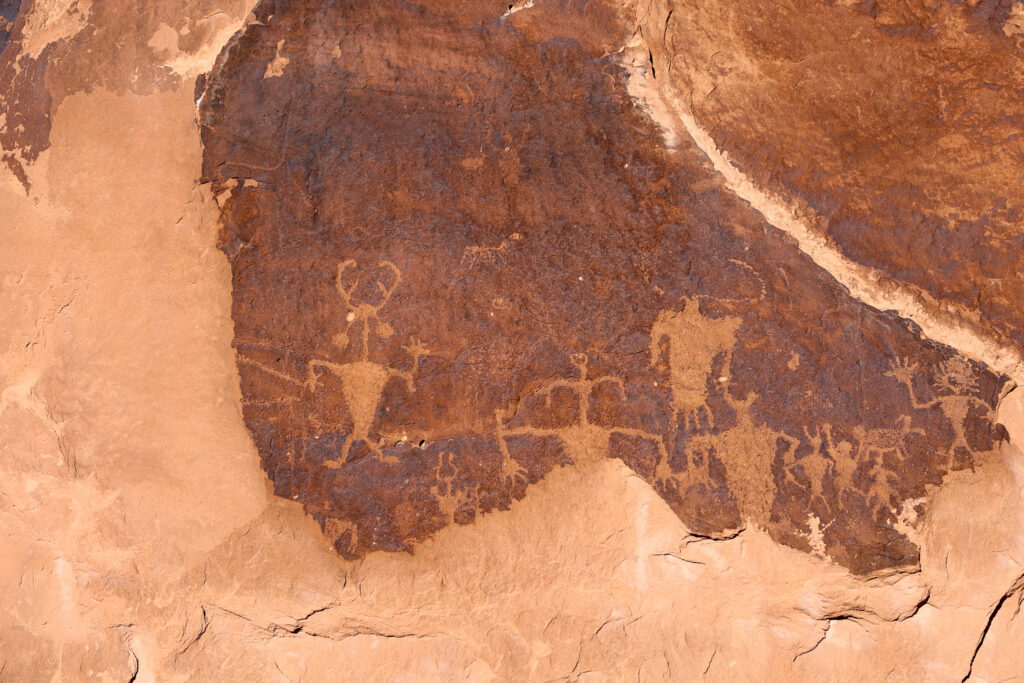
(Photo credit: Kaya Lindsay)
Location: 38.537851, -109.479398
Distance: 0 miles
Difficulty: Very easy
Bathroom on site: No bathroom on site.
Dogs: Dogs on leash are allowed.
The Golf Course Rock Art Site is a great site to visit if you’re in town and just looking for a short outing in between meals or before you meet up with friends for a hike. The site is directly off the main road and has some very clear petroglyphs. This site is near a residential area, so please be respectful of your neighbors! And remember to look, but not touch.
Newspaper Rock
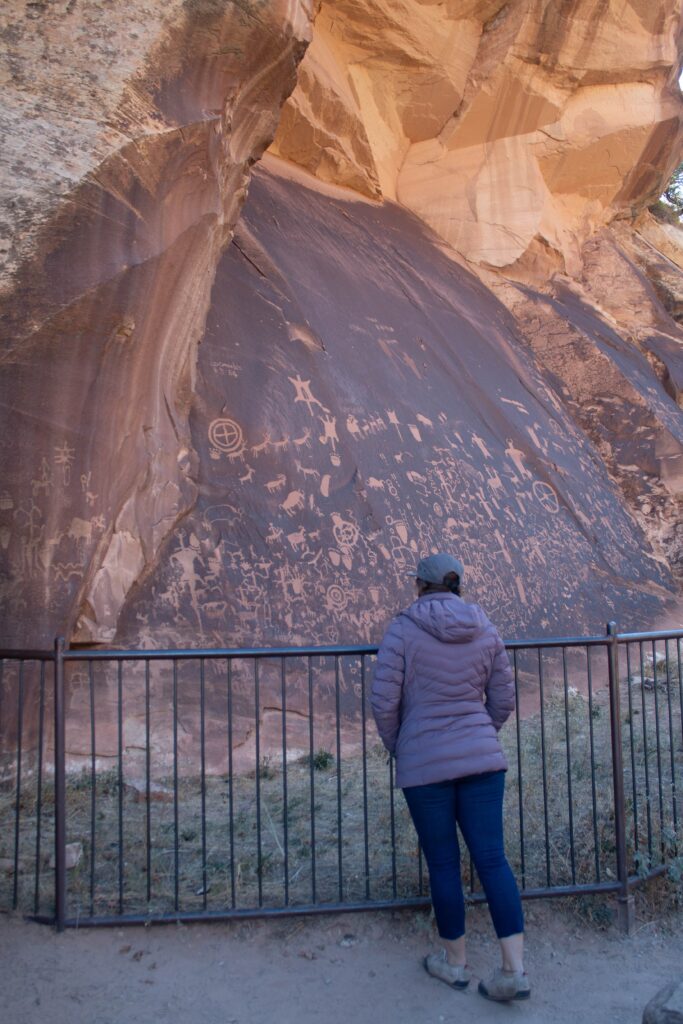
Location: 37.987979, -109.518033
Distance: 0 miles
Difficulty: Very easy
Bathroom on site: Yes
Dogs: Dogs on leash allowed
Newspaper rock is one of the most intricate and clear petroglyph sites in Moab. It has hundreds of different images depicted on it, all which evoke powerful emotions in the interpreter. Since we can never truly know what the Indigenous people were thinking while carving these images, it is often up to you to interpret what they mean. What can you see? What do you think they were trying to convey?
If you look closely, you will also see names carved in the rock from the early 1920’s. Again, please never carve your name into a petroglyph panel.
(Photo credit: Kaya Lindsay)
Enjoy the Art
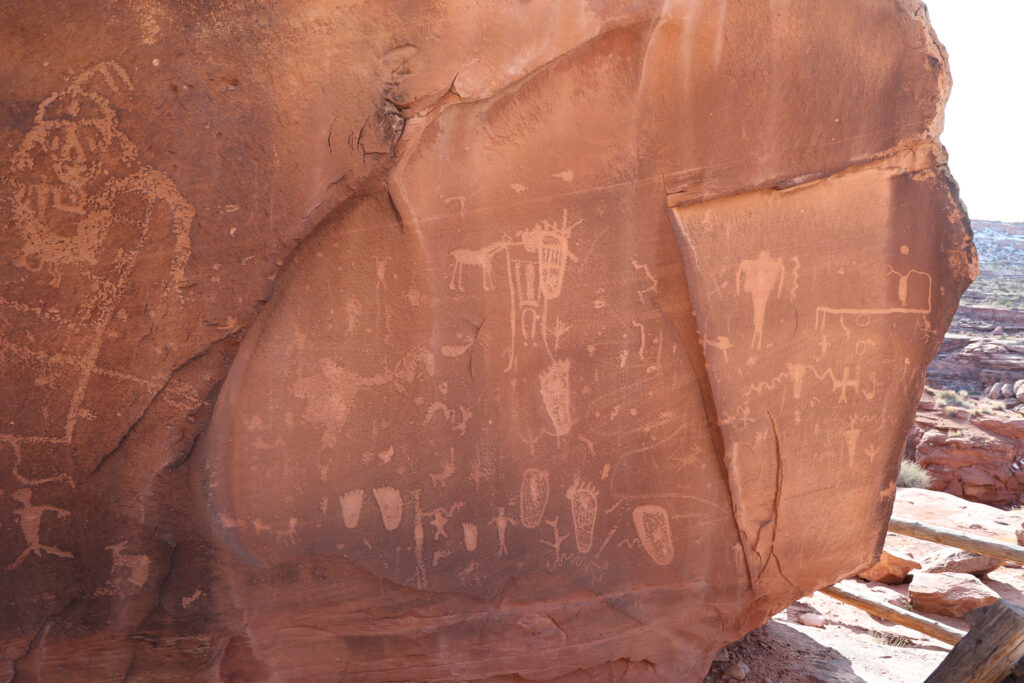
(Photo credit: Kaya Lindsay)
The rock art is something to behold, and is a must see for anyone coming to visit Moab. The Fremont and the Ancestral Puebloan people were known to live in Utah and inhabited many places nearby. These two groups lived in Utah approximately 2,000 years ago, and according to the National Park Service are credited with many of the petroglyphs from Moab to Capitol Reef National Park.
The remnants of these tribes are left for us to marvel at in the form of petroglyphs and pictographs. We are lucky to have so many reminders of the past in our beautiful red rock country.


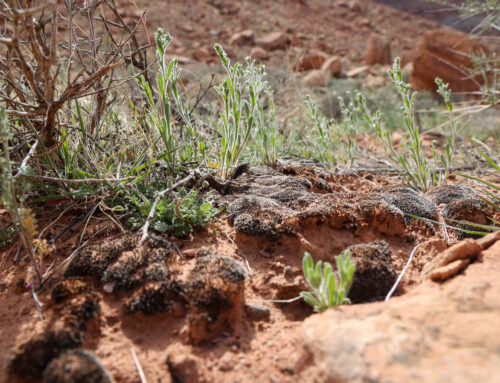



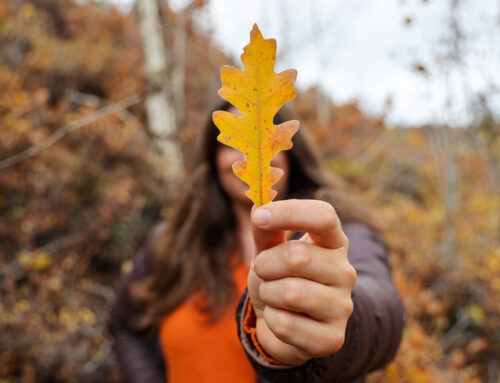
Leave A Comment